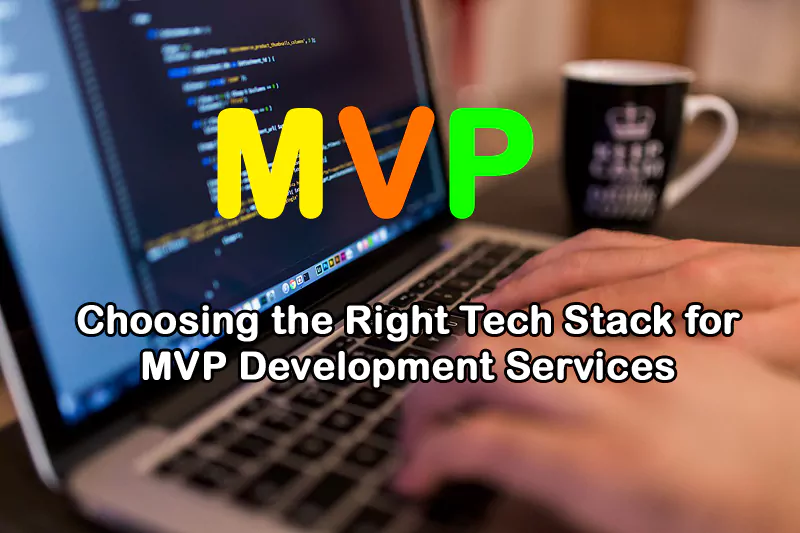When it comes to developing an MVP (Minimum Viable Product), choosing the right tech stack is crucial. The right combination of programming languages, frameworks, libraries, and tools can make or break your project’s success. In this comprehensive guide, we will explore the various factors you should consider when choosing a web development tech stack for your MVP development services.
What is an MVP?
Before we dive into the tech stack, let’s define what an MVP is. An MVP is a prototype of your product that contains only the essential features needed to validate your idea and gather feedback from users. The goal is to develop a product that is functional enough to attract early adopters and investors, without wasting time and resources on features that users may not need or want.
Factors to Consider When Choosing a Tech Stack
Project Requirements
The first factor to consider when choosing a tech stack is the project’s requirements. What features do you want to include in your MVP? What kind of functionality does your product need to have? The answers to these questions will help you determine which programming languages, frameworks, and libraries are best suited for your project.
For example, if you are building a web application that requires real-time updates and communication, you might consider using a tech stack that includes Node.js and Socket.io. On the other hand, if your MVP is a mobile app that needs to work on both Android and iOS, you might consider using React Native.
Development Team’s Expertise
Another important factor to consider is the expertise of your development team. If your team is experienced with a particular programming language or framework, it may be best to stick with what they know. However, if you are working with a new team or outsourcing development services, you should consider a tech stack that is easy to learn and has a large community of developers.
Scalability
Scalability is another factor to consider when choosing a tech stack. Your MVP may start small, but if it takes off, you will need a tech stack that can handle growth and increased traffic. This means choosing a tech stack that can scale horizontally (adding more servers) or vertically (upgrading server hardware).
Security
Security is a critical factor to consider, especially if your MVP involves sensitive data or financial transactions. You should choose a tech stack that has strong security features, such as encryption, authentication, and access control. Additionally, you should regularly test your product’s security and implement updates and patches as needed.
Cost
Finally, you should consider the cost of the tech stack. Some programming languages, frameworks, and tools are more expensive than others, and you should choose a tech stack that fits your budget. However, keep in mind that choosing a cheap tech stack may result in poor performance, security vulnerabilities, and a lack of scalability.
Popular Tech Stacks for MVP Development Services
Now that we’ve covered the factors to consider when choosing a tech stack, let’s explore some of the most popular tech stacks for MVP development services.
MEAN Stack
The MEAN stack (MongoDB, Express.js, AngularJS, and Node.js) is a popular choice for MVP development services. It is an all-JavaScript stack, which makes it easy to learn and use. Additionally, it has strong support for real-time applications, making it an excellent choice for web applications that require real-time updates and communication.
MERN Stack
The MERN stack (MongoDB, Express.js, React, and Node.js) is similar to the MEAN stack, but it uses React instead of AngularJS. React is a popular JavaScript library that is known for its performance and flexibility. The MERN stack is an excellent choice for developing web applications that require a lot of dynamic content.
LAMP Stack
The LAMP stack (Linux, Apache, MySQL, and PHP) is a classic choice for web development. It is a popular choice for MVP development services because it is easy to learn and use. Additionally, it has a large community of developers, making it easy to find support and resources.
Ruby on Rails
Ruby on Rails is a popular web application framework that is known for its simplicity and elegance. It uses the Ruby programming language and follows the convention over configuration (CoC) philosophy, which means that developers don’t need to spend a lot of time configuring the framework.
Django
Django is a popular web application framework that is written in Python. It is known for its security, scalability, and robustness. It is an excellent choice for developing MVPs that require a lot of backend functionality.
React Native
React Native is a popular mobile application framework that allows developers to write code once and deploy it on both Android and iOS. It is an excellent choice for MVPs that require a mobile app component.
Conclusion
Choosing the right tech stack for MVP development services is crucial to the success of your project. You should consider factors such as project requirements, development team’s expertise, scalability, security, and cost. Additionally, you should choose a tech stack that is easy to learn and use, has a large community of developers, and is scalable and secure.
The tech stacks mentioned in this article are just a few of the many options available. Ultimately, the right tech stack for your MVP will depend on your project’s specific needs and requirements. By carefully considering the factors mentioned in this article and doing your research, you can choose a tech stack that will help you develop a successful MVP.
